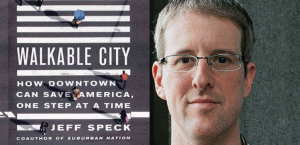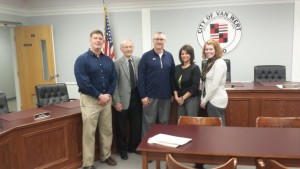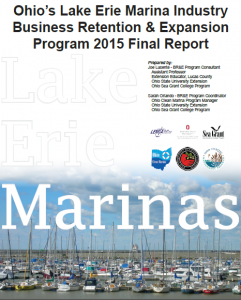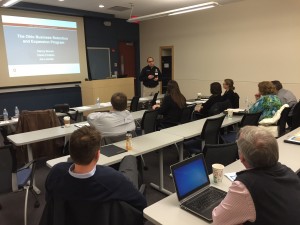 Visiting with a colleague recently, she shared that these uncertain times in our workplace, in our communities, and in the larger world around us require that we ask ourselves what we really are about.
Visiting with a colleague recently, she shared that these uncertain times in our workplace, in our communities, and in the larger world around us require that we ask ourselves what we really are about.
For the past several days, nearly 350 practitioners, academics, and Extension professionals came together to share and learn and discuss how we can make a difference within the various communities we serve in the first-ever joint conference with NACDEP and the Community Development Society (CDS).
Big Sky, Montana, provided the conference venue for over 130 concurrent session presentations, 40 poster presentations and 3 IGNITE presentations. Five keynote presentations were included along with 8 mobile learning workshops focused on culture, local food, leadership and collaborative partnerships for economic development.
Among the presentations were ten involving a dozen of Ohio’s Extension professionals. Topics and presenters (including those involving out of state collaborators indicated with an *) are listed below:
- Credentialing Local Planning Officials: Master Citizen Planner Program (Wayne Beyea*, Myra Moss & Kara Salazar*)
- Entrepreneurial Networking Competencies: Contemporary Perspectives on Social Capital (Julie Fox)
- Energize Job Retention: Energy Management Strategies as a Component of Business Retention and Expansion Programs (Nancy Bowen, Eric Romich & David Civittolo)
- Bold Partnering: Join a National Network on Leadership Programming (Brian Raison, Kyle Willams* & Elizabeth North*)
- A New Tool for Increasing Marina Resiliency to Coastal Storms in the Great Lakes (Joe Lucente & Sarah Orlando)
- Building Collaborative Partnership Around Critical Community/Stakeholder Issues: Watersheds, Agriculture, and a City’s Source Water Quality (Myra Moss)
- Maximizing the Gains of Old and New Energy Development for America’s Rural Communities (Eric Romich, David Civittolo & Nancy Bowen)
- Partnering for Community Health (Becky Nesbitt)
- Exploring ways of using Community Arts, Cultural and Heritage businesses to stimulate Rural Community Economic Development (Godwin Apaliyah & Ken Martin)
- Using Farmers Markets as a Tool for Economic Development: Increasing Healthy Food Access While Benefiting Small to Mid-Sized Farms (Amanda Osborne)
- A Dialogue Prompt for Housing and Land Use Policy in a New Administration (poster) (Anna Haines* & Myra Moss)
Three Ohioans were also installed as officers on the national NACDEP board: Nancy Bowen (re-elected Treasurer), David Civittolo (elected President-elect), and Brian Raison (elected north-central region Representative).
Two OSUE NACDEP members were also recognized with national and regional awards. Raison received regional and national recognition for using educational technology in developing ‘A Virtual Farm Market Pilot’ and creating materials for ‘Top 10 Ways to Improve Online Teaching and Learning.’ He received regional recognition in the category ‘Excellence in CD Work’ for his effort, ‘Establishing an Impactful Local Food Council.’ Romich received regional recognition (honorable mention) in the category ‘Distinguished Career.’
Leadership, teamwork and collaboration were celebrated and cultivated throughout the conference. And after a very moving final keynote address by Sarah Calhoun of Red Ants Pants, we were reminded again that working together we truly can move mountains. See you next year in Cleveland, June 10-13!
Greg Davis is a Professor and Assistant Director for OSU Extension Community Development.




 As recently as two weeks ago, Extension CD professionals David Civittolo and Joe Lucente visited with colleagues at the University of Florida to deliver a three-day train the trainer program. Twelve University of Florida Extension agents learned the nuts and bolts of the traditional BR&E program and were also introduced to a newly-revised curriculum module: BR&E for Agri-business.
As recently as two weeks ago, Extension CD professionals David Civittolo and Joe Lucente visited with colleagues at the University of Florida to deliver a three-day train the trainer program. Twelve University of Florida Extension agents learned the nuts and bolts of the traditional BR&E program and were also introduced to a newly-revised curriculum module: BR&E for Agri-business. For example, one business indicated during an interview that they needed assistance purchasing more locally grown vegetables for their high-end restaurant. As a result of the interview, Florida Extension agents were able to put the owner in touch with a local greenhouse that is in a position to provide more locally grown vegetables.
For example, one business indicated during an interview that they needed assistance purchasing more locally grown vegetables for their high-end restaurant. As a result of the interview, Florida Extension agents were able to put the owner in touch with a local greenhouse that is in a position to provide more locally grown vegetables. Recognizing the importance of the agri-business industry, the Ohio Sea Grant College Program and Ohio State University Extension partnered with Lake County organizations to carry out a Business Retention and Expansion (BR&E) Program. Local partners included: the Lake County Soil and Water Conservation District, Lake County Development Council and Ohio Farm Bureau. As a result of this local applied research effort, the local partners and other community leaders are better able to assist ag-focused businesses in the area to achieve their growth objectives and to improve the overall business environment for Lake County’s agri-business industry.
Recognizing the importance of the agri-business industry, the Ohio Sea Grant College Program and Ohio State University Extension partnered with Lake County organizations to carry out a Business Retention and Expansion (BR&E) Program. Local partners included: the Lake County Soil and Water Conservation District, Lake County Development Council and Ohio Farm Bureau. As a result of this local applied research effort, the local partners and other community leaders are better able to assist ag-focused businesses in the area to achieve their growth objectives and to improve the overall business environment for Lake County’s agri-business industry. Next, an announcement was made last week regarding a new BRE-customized mobile application that is now ready for commercial release. The mobile application is a highly anticipated outcome of a North Central Regional Center for Rural Development (NCRCRD) multi-state collaborative grant project to elevate and expand the BRE program in the region and throughout the U.S. The team of Ohio, Indiana and Iowa researchers identified the application as a way to revolutionize how data is collected for BRE tracking and reporting. A demonstration and presentation of the mobile application will take place at the International Economic Development Council (IEDC) annual conference September 25 in Cleveland (see program description and speakers below).
Next, an announcement was made last week regarding a new BRE-customized mobile application that is now ready for commercial release. The mobile application is a highly anticipated outcome of a North Central Regional Center for Rural Development (NCRCRD) multi-state collaborative grant project to elevate and expand the BRE program in the region and throughout the U.S. The team of Ohio, Indiana and Iowa researchers identified the application as a way to revolutionize how data is collected for BRE tracking and reporting. A demonstration and presentation of the mobile application will take place at the International Economic Development Council (IEDC) annual conference September 25 in Cleveland (see program description and speakers below).
 Communities across the nation have seen the positive impacts a thriving downtown has on community development. If you believe your downtown could use a little TLC, suggest to your community development leaders consider strategies for revitalizing your downtown.
Communities across the nation have seen the positive impacts a thriving downtown has on community development. If you believe your downtown could use a little TLC, suggest to your community development leaders consider strategies for revitalizing your downtown.


 Extension CD faculty
Extension CD faculty